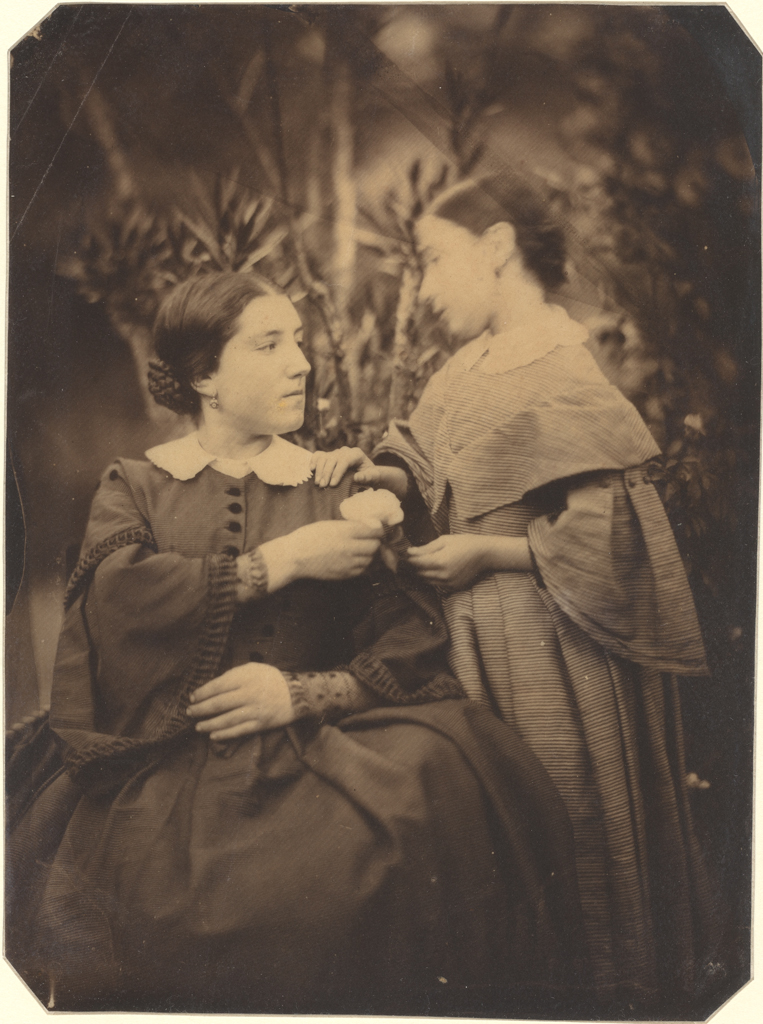Portrait of Woman and Child by Jean-Baptiste Frénet, 1855
Frénet, a student of the French painter Jean-Auguste-Dominique Ingres, began to photograph in the early 1850s and made intimate, spontaneous portraits of family and friends. He used a method of making negatives on glass coated with collodion (guncotton dissolved in ether) invented in 1851 by the Englishman Frederick Scott Archer. Because of its faster exposure times and sharper definition, collodion was used by most photographers from the late 1850s through the 1870s. See a video of the collodion process for more information on this type of print.
Although photographers in the 1850s usually waxed their paper negatives to achieve greater detail, it was less common for prints to be waxed. Here, the thick wax coating gives a warmer tone and glossier surface than seen in the previous unwaxed salted paper print.
source: National Gallery of Art






